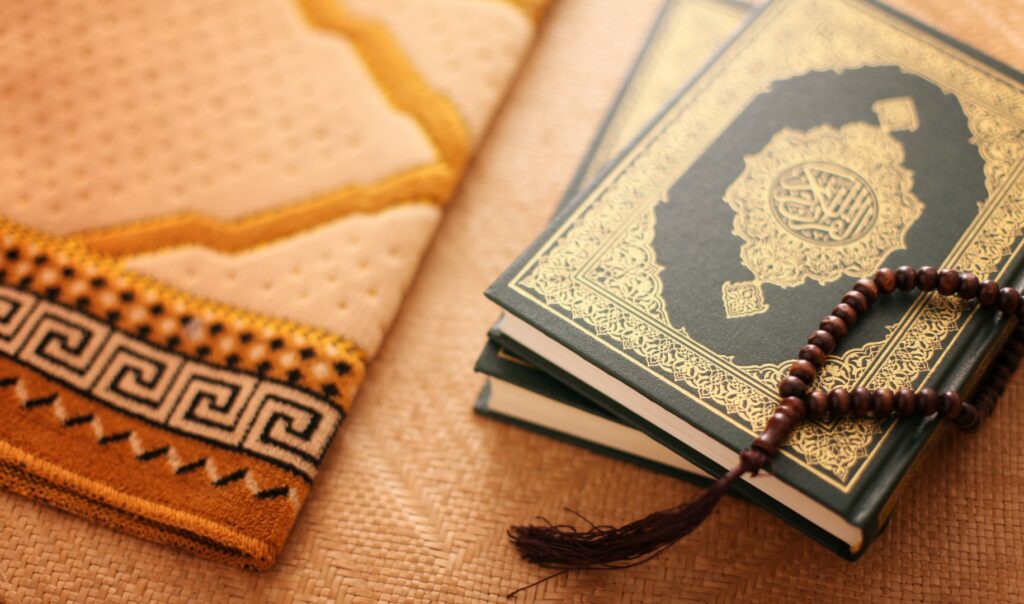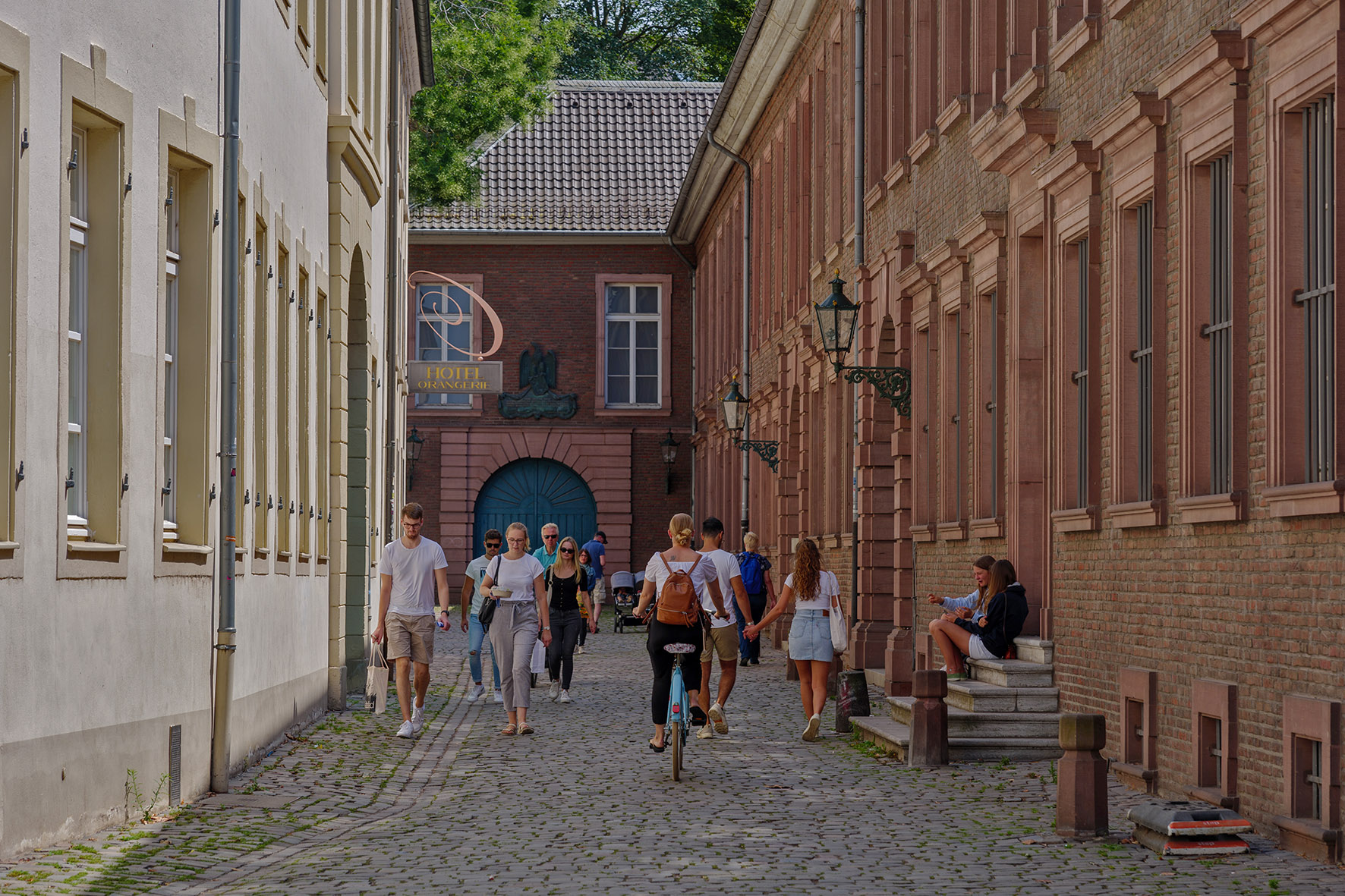Religious diversity and education: The Muslim world in some Italian textbooks
Religious diversity and education: The Muslim world in some Italian textbooks
This contribution was written by Antonio Cuciniello, PhD, from the Università Cattolica del Sacro Cuore in Milan. antonio.cuciniello@unicatt.it
The Presence of Students with Non-Italian Citizenship: the Challenge of Intercultural Education
In Italy the rapid and continuous growth of the migration phenomenon has also impacted on the school system over the years. According to the data provided by the Ministry of Education (Ministero dell’Istruzione, 2021), the number of students with non-Italian citizenship (NIC) has raised from the number of 37,478 (1993/1994) to 876,801 (10,3% of the total school population) in the school year 2019/2020. Considering their countries of origin, the variety has grown over the years to reach more than 200 countries, that is almost the whole world, even though the most numerous communities of students NIC are from Romania (156,718), Albania (118,778) and Morocco (108,454).
The presence of students NIC has created a process of demographic transformation. It involves new didactic and above all pedagogical challenges regarding the testing of new possible ways of intercultural coexistence, which implies discovering an essential stability between diversity and integration (Pattaro, 2014). As a matter of fact, this situation is also associated with cultural, linguistic and religious differences which are present in the school-training system; in fact, Italy is experiencing an increase in religious diversity. Therefore, the concept of intercultural education and dialogue, strongly promoted by the EU with the proclamation of the European Year of Intercultural Dialogue in 2008 as a key competence for teachers working in changing and diverse classrooms (Skrefsrud, 2016; Holmes, Dooly, O’Regan, 2016), has been a positive response to this new situation. In particular, in 2008 the Council of Europe published its White Paper on Intercultural Dialogue in order to offer guidance to decision makers in politics, administration and education. It states the following: «Promoting intercultural dialogue contributes to the core objective of the Council of Europe, namely preserving and promoting human rights, democracy and the rule of law» (Council of Europe, 2008, 8; cf. UNESCO, 2006).
As regards the Italian school system in relation to intercultural education, in 1990 the Italian Ministry of Public Education defined through the Ministerial Circular no. 205, La scuola dell’obbligo e gli alunni stranieri. L’educazione interculturale (Compulsory Schooling and Foreign Students: Intercultural Education), the role of intercultural education as the fostering of positive coexistence, preventing the creation of stereotypes and prejudices towards other peoples and cultures and overcoming any form of ethnocentrism. Later, in 1994, the Ministerial Circular no. 73, Dialogo interculturale e convivenza democratica: l’impegno progettuale della scuola (Intercultural Dialogue and Democratic Coexistence: The Planning Commitment of the Schools), represented the first systematic effort to shape what would later become the Italian approach to interculturalism. Indeed, intercultural education is defined not merely as a response to the issues raised by the presence of NIC students, but in fact as one of the most important strategies to combat racism, since it also includes the complex issues deriving from the contact between different cultures.
As an institution devoted to reception, in Italy the school system has played a fundamental role towards immigration, by progressively adopting ‘solutions’ which, from initial emergency stage, have developed with the purpose of ensuring the minors’ right to education considering the increasing presence of immigrants’ children, but also of the constant growth of students NIC born in Italy from migrant parents, namely, ‘second generations’ (65,4% of 876,801). For this reason, the school system needs, more and more, intercultural and interreligious education, in order both to sow the seeds of innovative pedagogical and didactic actions, and prevent any kind of radicalisation or extremism[1], promoting human rights education, education for democratic citizenship and intercultural education (Aslan, Rausch, 2018). In addition, the multicultural configuration of today’s society raises deep questions about the education and training systems. From such a point of view, intercultural training of teachers occupies a very important position. It is only by starting from a correct formulation of educational work that one can hope to promote a necessary education for a culture of peace and co-existence (Alma, Ter Avest, 2019).
In 1995 UNESCO stated that «all people engaged in educational action must have adequate teaching materials and resources at their disposal. In this connection, it is necessary to make the necessary revisions to textbooks to get rid of negative stereotypes and distorted views of “the other”» (UNESCO, 1995, 11). Furthermore, it is becoming ever more urgent to develop intercultural skills and dialogue, critical understanding and appreciation of different religions in order «to prevent ethnic, religious, linguistic and cultural divides […] to move forward together, to deal with our different identities constructively and democratically on the basis of shared universal values» (Council of Europe, 2008, 3). Lastly, specifically for the teaching about religions and beliefs in public schools, in 2007 the Toledo Guiding Principles were developed, aimed at both legislators and schools, in order to contribute to an improved understanding of the world’s increasing religious diversity and the growing presence of religion in the public sphere. As far as the preparation of curricula, textbooks and educational materials are concerned, it is declared that OSCE participating States, whenever they choose to promote the study and knowledge about religions and beliefs in schools, they «should take into account religious and non-religious views in a way that is inclusive, fair, and respectful. Care should be taken to avoid inaccurate or prejudicial material, particularly when this reinforces negative stereotypes» (OSCE/ODIHR, 2007, 17)[2]. Indeed, the learning approaches, methods and experiences, as promoted by the Council of Europe, should be based on three principles: religion is an important cultural fact; beliefs about the world and values must be developed gradually, based on real personal and social learning experiences; an integrated approach to spiritual, religious, moral and civic values must be encouraged (Keast, 2007).
School and religious diversity: Islam in (some) textbooks of Catholic Religion in Italy
As far as the conception/perception of Islam and Muslims coming out from textbooks is concerned, it turns out that too many textbooks still tend to be Eurocentric, so they are inadequate in terms of providing students with a balanced understanding of Islamic societies (Bayrakli, Hafez, 2016). Consequently, without forgetting the issue of religious illiteracy (Melloni, Cadeddu, 2019) and its effects on the social and political milieu, in this paragraph the first results of a research about Islam (as religion and culture) and Muslims in the most popular and modern Italian textbooks of Catholic Religion for upper secondary school have been described.[3] The analysis aimed mainly at understanding if in Islam and Muslims are presented in an objective way.
In the textbooks analysed Islam and Muslims do not account for lots of space, it is usually between 4 and 10 pages. Only in one case there are 23 pages (Manganotti, Incampo, 2017). Indeed, it has been noticed that the representation of Islam is often reduced to essentials and this creates a spiral of a lack of appropriate knowledge, an absence of the complex history of Islam. Accordingly, it may cause students to falsely assume that Islam is a homogeneous religion, without internal distinctions. Its presence can be framed into several chronological categories (e.g. the early years of Islam; the Crusades; the newest history). One can conclude that Islam and Muslims depiction is not totally accurate, so students are provided with minor information, since the topic is not always analysed deeply. The omission of deep information on the culture and history of Muslims certainly poses a problem. It is important providing teachers with information regarding pedagogical and curricular issues related to teaching about Islam: it can also help establish positive relationships with Muslim students and families, by understanding the requirements and core beliefs of Islam. Textbooks, therefore, should pay more attention to the connection of Islam with global, local and national cultures and histories and the historical and contemporary developments of Islam.
An appropriate way of introducing Islam, and its foundations, including cross-cultural differences, could lead at least to a modification of stereotypes about this religion and its believers. Furthermore, this could also avoid a widespread phenomenon, that is the “Arabisation” of Islam, namely it is quite often presented as a predominantly Arab religion, despite the fact that today, though the Arab world is often regarded as the historical heartland of Islam, Arabs comprise only about 20 percent of the world’s Muslim population. Consequently, the words “Arabic” and “Islamic” are often wrongly used as synonymous and textbooks do not convey a sufficient information about religious and cultural distinctiveness of the Islamic world. As stated before, the students can get the impression that Islam is a homogenous religion. Finally, the exclusive relation of Islam with the Middle East, with rare references to other parts of the world, can provoke misconceptions in different ways. For instance, it could easily generate the idea that there is no other religious group in this area, to the detriment of other religious minorities (e.g., Christians and Jews).
Moreover, it was found that there is a clear lack of a diachronic approach considering, for example, the development of the different Islamic legal and theological schools. On the other hand, when it comes to modernity interreligious dialogue and fundamentalism (not only Islamic, but mostly connected to Islam) prevail (cf., e.g., Trenti, Lucillo, Romio, 2014, 352, 369). Compressing and simplifying complicated contents for students and teachers is a challenge: textbooks cannot convey, for instance, the question of women or fundamentalism in Islam in a few sentences, since the student audience does not always have the background or maturity to grasp its significance and evolution. In a case there is an effort to adopt an autobiographical approach (Bocchini, 2015, 89). It could be a different way of presenting Islam, by taking the “other” point of view and deepening everyday issues, such as religions and food choices, as well as afterlife (cf., e.g., Solinas, 2014, 43).
Attention has also been put on the translation and interpretation of some Islamic keywords. It has been found that there is still a confusion between Islam, as a religion, and Islamism, as a political ideology (Manganotti, Incampo, 2017, 368). The terms are used as synonymous. The same can be said of Muslim and Islamic (Solinas, 2015, 330). The latter used as a noun and not as an adjective. In most cases the word Allah is not translated as “God” (Solinas, 2015, 330), except in one case (Porcarelli, Tibaldi, 2017, 370), with the possibility to represent Allah as the “personal god” of Muslims. Sometimes, in the same text there are God and Allah, but without an explanation (Pisci, Bennardo, 2016, 229). The same can be said as far as the important concept of Jihad is concerned. Defining jihad is admittedly difficult, as definitions in circulation vary radically. There is greater precision of its definition, namely the difference between “big Jihad” and “small Jihad”, and of its translation, not simply “holy war” (cf., e.g., Maglioli, 2017, 267).
As far as sources are concerned, it is well known that they must be mentioned for further investigation and primary sources, in particular, expose students to multiple perspectives. In the present investigation, in each textbook analysed the reference to the Italian translation of the Koran has never been found. Indeed, there are different Italian translation of this text: the first appeared in 1547 in Venice. This means that students cannot have access to the entire translation and cannot, for example, check the notes to the verses they will read (cf., e.g., Porcarelli, Tibaldi, 2017, 83).
Conclusion
To conclude, although there is a clear improvement towards a more intercultural approach, the image of Islam remains quite partial and the Italian curricula are not always able to respond to the changing features of Italian society. Thus, even though the new textbooks for religious education have included more information about other faiths, they still do not convey sufficient information concerning pluralism and diversity. This is an incomplete view of religious cultures and traditions, with the risk of misrepresenting their foundations. Yet, thanks to a more widespread and shared intercultural approach, as a positive fact, unlike past researches, it should be appreciated that the analysed textbooks do not communicate rude and offensive clichés, even though certain stereotypes and manifestations of Eurocentric perspective are still present.
For the extended version of this text, see Cuciniello, A. (2020). ‘Perceptions of Islām in Italy: Interpreting the Muslim World in some Italian Textbooks.’ Annali di Scienze Religiose, 13, 131–158; see ‹http://www.brepols.net/Pages/ShowProduct.aspx?prod_id=IS-9782503587189-1› (Accessed on 18 November 2021).
[1] In response to extremist violence and terrorist attacks in Europe, the EU Education Ministers adopted in 2015 the Paris Declaration on Promoting citizenship and the common values of freedom, tolerance and non-discrimination through education since «The primary purpose of education is not only to develop knowledge, skills, competences and attitudes and to embed fundamental values, but also to help young people – in close cooperation with parents and families – to become active, responsible, open-minded members of society» (EU Ministers of Education, 2015, 2; cf. Jackson, 2003).
[2] Since textbooks, along with pedagogical materials, do not simply pass on knowledge, but mirror the values of the society in which they are produced and used (Farrell, Heyneman, 1989; UNESCO, 2005), a critical review of textbooks content should be constantly conducted by teachers (UNESCO, 1995; 2005; 2014; 2020; cf. Shulman, 1987).
[3] The analysed textbooks have been all approved by the Italian Episcopal Conference (Conferenza Episcopale Italiana or CEI) and published between 2014 to 2017. Data were collected through the help of a grid. The qualitative analysis has investigated different descriptors mainly grouped in three categories: text(s) and source(s), images and source(s), and didactic tools/teaching aids. A detailed analysis was carried out through reading of titles (chapters and paragraphs), contents, images and captions.
Textbooks analysed
Bocchini, S. (2015). Incontro all’Altro Plus. Bologna: Edizioni Dehoniane.
Cristiani, C., and Motto, M. (2017). Coraggio, andiamo!. Brescia: Editrice la Scuola.
Cristiani, C. (2017). Non è nel cielo. Brescia: Editrice la Scuola.
Maglioli, P. (2017). Capaci di sognare. Torino: SEI.
Manganotti, R., and Incampo, N. (2017). Il nuovo Tiberiade. Brescia: Editrice la Scuola.
Pisci, A., and Bennardo, M. (2016). All’ombra del Sicomoro. Milano: Marietti scuola – DeA Scuola.
Porcarelli, A., and Tibaldi, M. (2017). Il nuovo La sabbia e le stelle. Torino: SEI.
Solinas, L. (2014). Le vie del mondo. Torino: SEI.
Solinas, L. (2015). Arcobaleni. Torino: SEI.
Trenti, Z., Lucillo, M., and Romio, R. (2014). L’ospite inatteso. Torino: SEI.
References
Alma, H., and Ter Avest I. (Eds.) (2019). Moral and Spiritual Leadership in an Age of Plural Moralities. London: Routledge.
Aslan, E., and Rausch, M. (Eds.) (2018). Religious Education: Between Radicalism and Tolerance. Wiesbaden: Springer.
Bayrakli, E., and Hafez, F. (Eds.) (2016). European islamophobia report. Istanbul: SETA.
Council of Europe (2008). White paper on intercultural dialogue. “Living Together As Equals in Dignity”. Strasbourg: Council of Europe Publishing. Retrieved from ‹https://www.coe.int/t/dg4/intercultural/source/white%20paper_final_revised_en.pdf› (accessed on 15 November 2021).
EU Ministers of Education (2015). Paris Declaration: Declaration on Promoting citizenship and the common values of freedom, tolerance and non-discrimination through education. Paris. ‹https://eu2015.lv/images/notikumi/2015-3-10_Declaration_EN.pdf› (Accessed on 18 November 2021).
Farrell, J., and Heyneman S. (Eds.) (1989). Textbooks in the developing world: Economic and educational choices. Washington DC: Economic Development Institute.
Holmes, P., Dooly, M., and O’Regan, J. (Eds.) (2016). Intercultural Dialogue: Questions of research, theory and practice. London: Routledge.
Jackson, R. (Ed.) (2003). International Perspectives on Citizenship, Education and Religious Diversity. London and New York: Routledge Falmer.
Keast, J. (Ed.) (2007). Religious Diversity and Intercultural Education: A Reference Book for Schools. Strasbourg: Council of Europe.
Melloni, A., and Cadeddu, F. (Eds.) (2019). Religious Literacy, Law and History: Perspectives on European Pluralist Societies. London: Routledge.
Ministero dell’Istruzione (2021). Gli alunni con cittadinanza non italiana: Anno scolastico 2019/2020. Roma: MIUR. ‹https://miur.gov.it/pubblicazioni› (Accessed on 16 November 2021).
OSCE/ODIHR (2007). Toledo Guiding Principles on Teaching about Religions and Beliefs in Public Schools. Warsaw: OSCE/ODIHR. ‹https://www.osce.org/files/f/documents/c/e/29154.pdf› (Accessed on 15 November 2021).
Pattaro, C. (2014). ‘The evolution of multi-ethnic schools in Italy: Research pathways on social integration.’ Italian Journal of Sociology of Education, 6 (3), 270–282.
Shulman, L. (1987). ‘Knowledge and teaching: Foundations of the new reform.’ Harvard Educational Review, 57 (1), 1–22.
Skrefsrud, T.-A. (2016). The Intercultural Dialogue: Preparing Teachers for Diversity. Münster: Waxmann.
UNESCO (1995). Guidelines and Criteria for the Development, Evaluation and Revision of Curricula, Textbooks and other Educational Materials in International Education in Order to Promote an International Dimension in Education. Paris: UNESCO Publishing. ‹https://unesdoc.unesco.org/ark:/48223/pf0000100178?posInSet=13&queryId=34bae84a-4307-4642-9158-1bb7f505d78b› (accessed on 15 November 2021).
UNESCO (2005). A Comprehensive Strategy for Textbooks and Learning Materials. Paris: UNESCO Publishing. ‹https://inee.org/system/files/resources/UNESCO-Comprehensive_Strategy_for_Textbooks_2005.pdf› (Accessed on 15 November 2021).
UNESCO (2006). UNESCO Guidelines on Intercultural Education. Paris: UNESCO Publishing. ‹http://www.ugr.es/~javera/pdf/DB2.pdf› (Accessed on 10 November 2021).
UNESCO (2014). Textbooks and Learning Resources: A global framework for policy development. Paris: UNESCO Publishing. ‹https://unesdoc.unesco.org/ark:/48223/pf0000226135_eng› (Accessed on 18 November 2021).
UNESCO (2020). Textbooks and Inclusive Education. Paris: UNESCO Publishing. ‹https://unesdoc.unesco.org/ark:/48223/pf0000373693› (Accessed on 10 November 2021).






